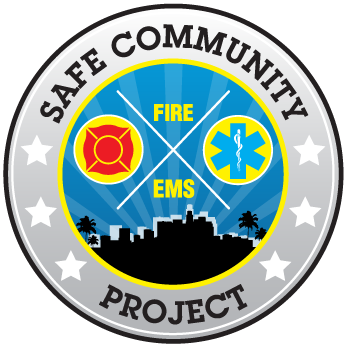FAQs
Everyone has questions about all kinds of issues related to fire safety and disaster resilience. We’ve organized some of the most common questions into separate categories – all available here. If you cannot find answers to your questions, please contact us directly below. We’ll do our best to get you the answers you need promptly.
The Safe Community Project is a non-profit, public benefit organization focused on community resilience and public safety. We develop emergency response plans, create training content for firefighters and the public, teach safety in schools and to older adults, and generally work to collaborate with local first responders – doing things they can no longer do, mainly as a result of being busy, lacking appropriate staffing or budget. We act as a “force multiplier.”
Programs that reduce risk to the community are becoming know as “Community Risk Reduction,” or “CRR” initiatives. Typically developed and executed by fire/rescue agencies, the most common program involves home visits, including delivery of education and home inspection. The Safe Community Project is actively involved in CRR within the State of California. Our organization is careful to ensure we follow baseline standards as defined by the NFPA, USFA, as well as an independent fire/safety program called Vision 20/20. Our home safety educators utilize high technology software and other means to achieve measurable results. In addition, our educators will support CRR via distribution and installation of free smoke alarms to those in need.
Emergency response plans are designed for exactly what the title suggests: to respond to an emergency. Corporations, museums, and any venue with lots of employees or where the public congregate is in need of an emergency response plan. These plans help identify to the organization’s management what to do in order to protect people, assets, buildings, and the surrounding community in the event of a disaster – such as an earthquake, a flood, a fire, or even an active shooter. FEMA explains emergency response plans very well. You can read about their position here: https://www.ready.gov/business/implementation/emergency
We offer a wide range of training options. Those include collaborating with a local fire department to create educational content for the department’s firefighters, teaching CPR and AED use to a city’s employees, to high school students, to Junior Life Guards, or to older adults. We teach basic life support (BLS) first aid, and overall engage with organizations, school districts, and the general public to create a more resilient and prepared community.
ERPs take time and expertise. As such, there’s no fixed price on development. Each situation is unique, and plans must be built to ensure your organization’s safety and ability to take appropriate action. Our organization has worked with some very complicated situations, where historic art, assets, and hundreds of thousands of visitors were involved. Check out our management section to learn more about our expertise. If this is of any interest, let’s connect. Discussing your situation is free.
If you have a question and you can't find the answer here, please send us a note, and we'll get back to you as quickly as we can.

The Safe Community Project is a California 501 (c) (3) public benefit charity. We're managed by a public-safety oriented board of directors (and advisors) including active and retired fire officers, medical, educational and media experts. Our work is helping people to be more resilient.
©2008 - 2021 The Safe Community Project , all rights reserved, except where noted The Safe Community Project is a U.S. 501(c)(3) public charity, EIN 27-0967511. MySafe:LA is a unit operating within the Safe Community Project charity umbrella.